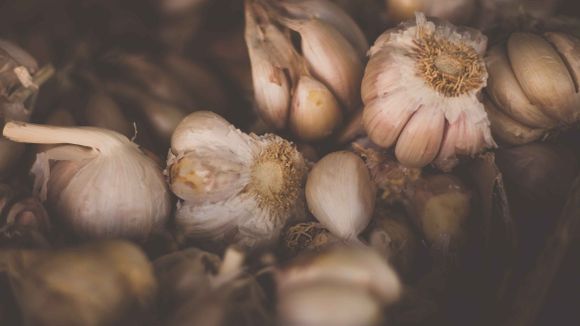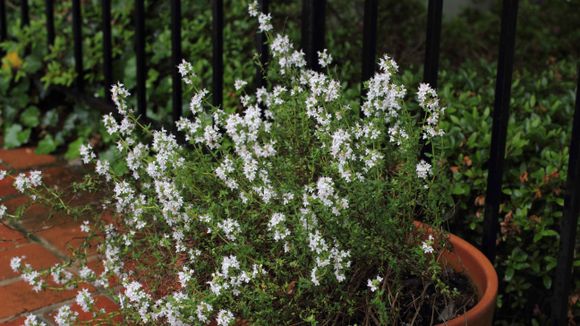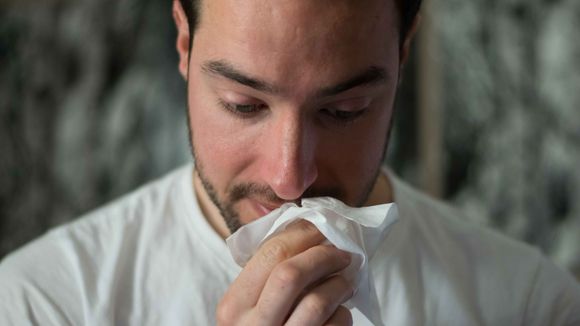1. Echinacea (Echinacea purpurea)
Echinacea, also known as the purple coneflower, has a long history of use in traditional medicine. Its immunostimulatory properties have been well-documented in scientific research, making it an effective remedy for boosting the body's natural defenses against fungal sinusitis (1).
Recipe: Echinacea Tea
Ingredients:
- 2 teaspoons dried Echinacea purpurea flowers
- 1 cup boiling water
- Honey or lemon, to taste
Preparation:
- Steep the dried flowers in boiling water for 10-15 minutes.
- Strain and add honey or lemon to taste.
- Drink 2-3 times daily for best results.
2. Garlic (Allium sativum)
Garlic has been used for centuries as a natural remedy for various ailments, and research has shown that it possesses antifungal and antibacterial properties (2). Its main active compound, allicin, has been shown to be effective against fungal sinusitis-causing pathogens (3).
Recipe: Garlic Nasal Rinse
Ingredients:
- 1-2 cloves fresh garlic
- 2 cups warm water
- 1 teaspoon salt
Preparation:
- Crush the garlic cloves and let them sit for 10 minutes to activate the allicin.
- Mix the crushed garlic with warm water and salt.
- Use a nasal irrigation device, such as a neti pot, to gently rinse the nasal passages.
- Perform this rinse once daily.

Photo by Anton Darius on Unsplash
3. Goldenseal (Hydrastis canadensis)
Goldenseal is a perennial herb native to North America. Its antifungal properties have been attributed to its active component, berberine (4). This compound has been shown to inhibit the growth of various fungi, making it a promising option for fungal sinusitis relief (5).
Recipe: Goldenseal Tincture
Ingredients:
- 1 ounce dried goldenseal root
- 5 ounces 100-proof alcohol (such as vodka)
Preparation:
- Combine the dried root and alcohol in a glass jar, ensuring the root is fully submerged.
- Seal the jar and store it in a cool, dark place for 4-6 weeks, shaking it occasionally.
- Afterward, strain the mixture through a cheesecloth, discarding the root.
- Take 10-20 drops of the tincture up to three times daily.
4. Tea Tree Oil (Melaleuca alternifolia)
Tea tree oil is a potent essential oil derived from the leaves of the tea tree. Its antifungal and antibacterial properties have been well-established, making it an effective remedy for fungal sinusitis (6).
Recipe: Tea Tree Oil Inhalation
Ingredients:
- 5 drops tea tree essential oil
- 1 bowl of hot water
Preparation:
- Add the tea tree oil to a bowl of hot water.
- Cover your head with a towel, lean over the bowl, and inhale the steam for 5-10 minutes.
- Repeat 1-2 times daily.

5. Thyme (Thymus vulgaris)
Thyme is a popular culinary herb with a variety of medicinal uses. Its active component, thymol, has demonstrated antifungal activity against various fungal pathogens, making it a promising option for relieving fungal sinusitis (7).
Recipe: Thyme Steam 2 / 2
Ingredients:
- 2 tablespoons dried thyme leaves
- 1 bowl of boiling water
Preparation:
- Add the dried thyme leaves to a bowl of boiling water.
- Cover your head with a towel, lean over the bowl, and inhale the steam for 5-10 minutes.
- Repeat 1-2 times daily.
Questions and Answers
Q: Can I use these remedies alongside prescribed medication for fungal sinusitis?
A: Always consult your healthcare provider before using herbal remedies in combination with prescribed medications, as interactions may occur.
Q: Are there any side effects of using these natural remedies?
A: Some individuals may experience allergic reactions or sensitivities to certain herbs. If you experience any adverse effects, discontinue use and consult your healthcare provider.
Q: How long should I continue using these remedies to see improvement?
A: The duration of treatment may vary depending on the severity of the condition and individual response. It is recommended to consult a healthcare professional for personalized advice.
Q: Can I use more than one of these remedies at the same time?
A: Some of these remedies can be used in combination, but it is essential to consult a healthcare professional or herbalist for guidance on safe and effective combinations.
Q: Are these remedies safe for children or pregnant women?
A: The safety of herbal remedies for children and pregnant women varies. It is crucial to consult a healthcare professional before using any herbal remedy
References
(1) Shah, S. A., et al. (2007). Echinacea purpurea for prevention of upper respiratory tract infections: A double-blind, placebo-controlled trial. Archives of Internal Medicine, 167(21), 2274-2281.
(2) Ankri, S., & Mirelman, D. (1999). Antimicrobial properties of allicin from garlic. Microbes and Infection, 1(2), 125-129.
(3) Ghannoum, M. A., & Rice, L. B. (1999). Antifungal agents: mode of action, mechanisms of resistance, and correlation of these mechanisms with bacterial resistance. Clinical Microbiology Reviews, 12(4), 501-517.
(4) Slobodníková, L., et al. (2004). Antifungal activity of Mahonia aquifolium extract and its major protoberberine alkaloids. Phytotherapy Research, 18(8), 674-676.
(5) Mahady, G. B. (2001). Goldenseal (Hydrastis canadensis): Is there enough scientific evidence to support safety and efficacy? Nutrition in Clinical Care, 4(5), 243-249.
(6) Carson, C. F., et al. (2006). Melaleuca alternifolia (tea tree) oil: a review of antimicrobial and other medicinal properties. Clinical Microbiology Reviews, 19(1), 50-62.
(7) Nostro, A., et al. (2004). Effects of oregano, carvacrol and thymol on Staphylococcus aureus and Staphylococcus epidermidis biofilms. Journal of Medical Microbiology, 56(4), 519-523.









